Mains plug safety (EU vs. US)
This is a short warning about using equipment with plugs for another country. Specifically US plugs in Europe, but it applies to many other countries also.
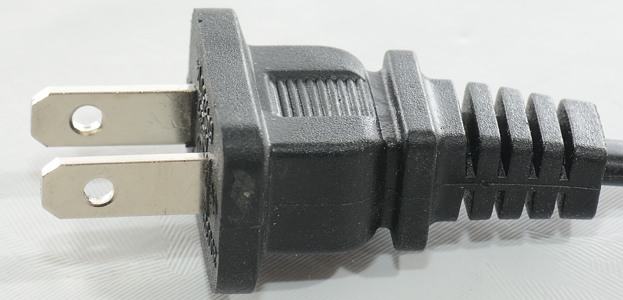
A lot of equipment sold on the internet is with US plug, the plug looks as show above. This plug is designed for 110/120VAC.

That plug does not work in Europe/EU, we use another type plug (A few European countries use other designs). This plug is designed for 230VAC, this requires higher safety, like the partial isolated pins.
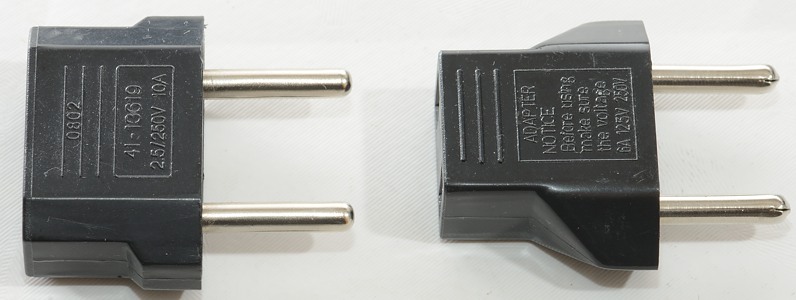
The typical way to solve the problem with different plugs is a adapter.
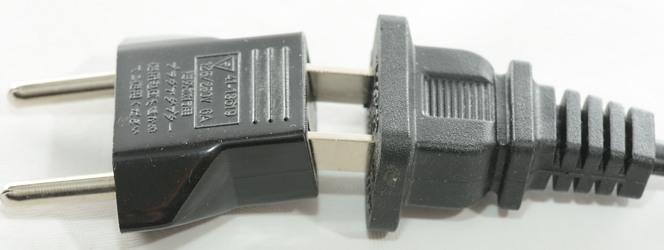
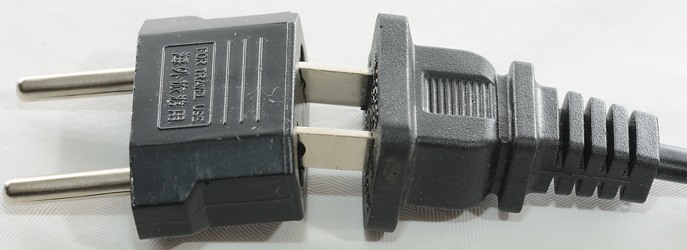
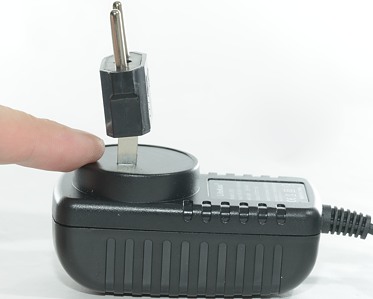
In all the above photos the US plug is connected to the EU plug side, i.e. there can be 230VAC on the visible part of the pins on the US plug. My fingers are large enough to be nearly safe, but smaller fingers may easily touch the metal.
Usual the metal will not be visible, but when somebody pulls the plug out, it will often be the US plug that is pulled out first, i.e. the metal will be visible and touchable (230VAC is rather nasty to touch).
The adapter is also missing the isolation on the pins.
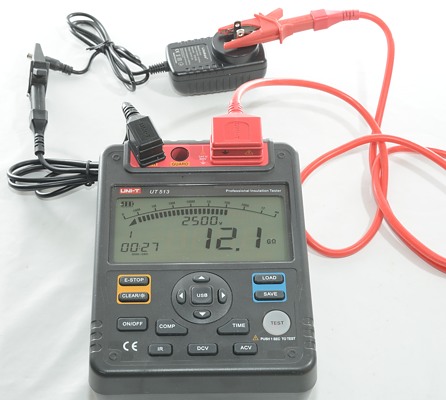
Then there is the question about the equipment, it might be rated for 110-230VAC, but even then the safety is not always designed for 230VAC. The above power supply can handle a 2500 volt difference between mains and low volt side, as required in US, but if I increase to 5000 volt, as required in EU*, it fails.
I do also have the same product in a EU version, there the supplied power supply has EU plug and passes the 5000 volt test.
*The actual requirement is slightly below 5000, but I cannot select that value on my tester.
Conclusion
If you live in a 230VAC country, be careful with equipment from US (or China with US plug). For equipment with a separate power adapter, it is often possible to buy a new one inside EU with EU plug, this will make the product safe.
Another safe way is to buy an isolation transformer, but that is expensive and takes up some space (Note: A 230VAC to 110VAC autotransformer is not an isolation transformer).
As a minimum, be sure everybody in the house known about the dangers and keep the adapters and plugs away from small children. Even people that are not supposed to use the equipment, may need to pull it out of a mains outlet!
thank you for the tip, i will be more care full from now on :)
Thanks for pointing at the dangers.
On top of this, those US->EU adapters are build very cheap and the adapter-plug assembly is very likely to break when you bump into it.
Thanks for posting this HKJ!
thank you HKJ
Thanks for the helpful information.
thanks for the warning HKJ,better ready than sorry ![]()
Thanks for the writeup HKJ.
Here in Korea, we have both EU 220V and US 120V plugs, as well as plug adapters.
People often disregard electrical safety and often forget to ground appliances and even take the ground pin out, which has caused some electrical fires. :~
When I was young, I inserted a pair of tweezers into a US outlet (seemed to go hand in hand at that time) and blew the house’s circuit breakers and light bulbs. Thankfully, the tweezers were insulated with a thin paint coating. Maybe that’s where I love for torches and lasers grew.
Nice info. Are there partially insulated adapters for sale somewhere?
Thanks HKJ!
same here that i once use my father tweezers on our EU type outlet thank god i’m still alive until now cause if something goes wrong i can get out from this world in light speed ![]()
I started early with electricity and have got some nasty shocks from the mains (220VAC). It has never scared my away from electricity, but probably made me more careful.
I got a nasty shock from electricity when I was 12 years old. I keep away from those stuff now. I am even somewhat afraid of changing bulbs when the switch is not off. If I am not sure (2 way switch), I might even switch off my mains to get a light bulb installed.
My solution: Super glue the EU adapter onto the US plug.
Or use something like this for countries using the UK plug.
+1. I have done that on most of my US plug devices.
I most certainly assume a mains shock, whether 110V or 220V, is very painful, but is it enough to kill a person?
I don’t think I know anyone personally who has died from electrocution via mains, but I do know TV repairmen did kill themselves while discharging lethal caps across their bodies.
It is, especially if you have a weak heart or cannot break the connection fast. One way to increase safety is a GFI/RCD device, it does not prevent the shock, but it will break the connection.
In Denmark today you always go to the hospital if you get a electric shock (There is something about a delayed response).
Lack of lethality is mainly due to the circuit breaker - any difference between in/out current triggers the breaker quickly. So even if you get yourself electrocuted, at most it will be very short under 100ms and didn’t do enough damage.
But yes, weak heart or pacemaker can be affected much more.
Depends on the incident.
If you are a normal, healthy person and just brush with your finger against the contact, you’ll probably be fine. Even if the heart is in the current path. Thing is, most people don’t know their heart condition.
I think most lethal accidents happen when you actually grab around or fall into some live cables etc, since you can’t open the hand or go away.
(We have ~60 deaths/year (for 80 million population) over here.)
Don’t know the regulation in other countries, but RCD is usually only installed for moist rooms like bathrooms over here.
But even with them, you can manage to have a current path through your heart without to much fault current to trip them. Touching each of the contacts of those crappy adapters shown in the OP while standing on a relatively good insulating surface, for example.
(I can’t express how much I despise those crappy power adapters. There should be serious consequences for importers that sell crap like that over here. )
We had a deadly accident of a fellow student from my vocational school back in the day. The boy worked on a electric cabinet when his idiot coworker turned power on back again. Something that makes you re-think your position on safety procedures.
You have to go to the hospital here, too. I think 24h on ECG is the minimum for a heart crossing current accident, often they do blood analyses too.
Often a small shock only will hurt. The think is, it also can easily kill you. You only know after the incident, never before. So better be careful around mains stuff. ![]()
That’s been my personal experience as well. I’m told that when I was younger, too young to remember, I was intent on sticking screwdrivers into 120v wall sockets and eventually, my dad let me teach myself a lesson. 40+ years later, I’m still here and have had other run-ins with live lines, most as you described, brushing against or accidentally touching both wires with one hand. I’ve also accidentally leaned on live heatsinks while troubleshooting TVs, but luckily they were not on the HV side. Ironically, the worst experiences I remember are not the actual shocks, but the result of jerking away and hitting something else hard or burns from the hot sparks of shorted wires. The most annoying incidents have actually been when I’m working on POTS (analog phone) lines and someone decides to call right at that exact moment. Let me tell you, that ring voltage feels just like 120v and you’re not expecting it at all. I almost fell off the ladder once while adding an extension wire in a high ceiling and somebody decided to call in.
KuoH
In the US, GFI outlets are generally only used for outdoor, bath and kitchen areas. All other outlets are normal 10A-20A breakers and you’d be fried to a crisp long before tripping one of those.
KuoH